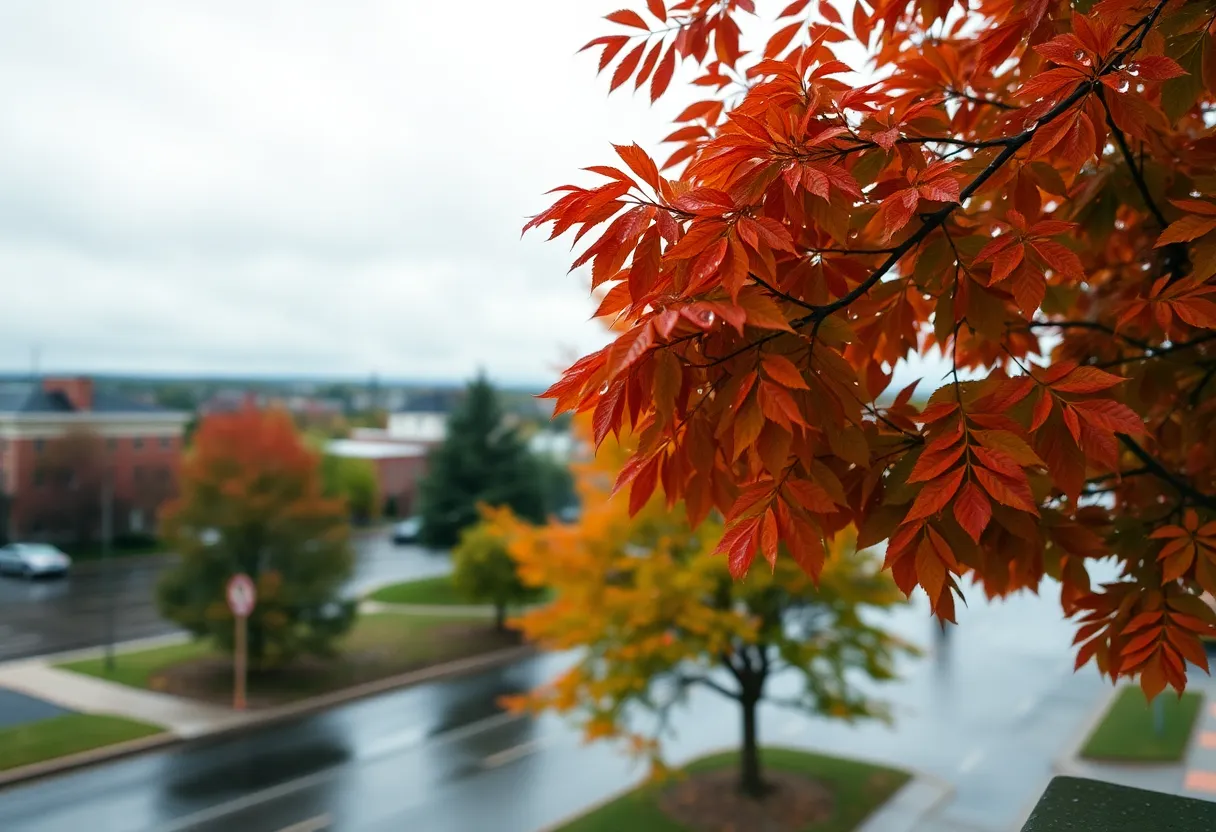News Summary
In the aftermath of a shooting incident involving a prominent figure, traditional media faced challenges in accurately reporting details as they grappled with the nuances of online culture. Many major publications misinterpreted key aspects of the situation and demonstrated a lack of familiarity with platforms like Discord, raising concerns about the accuracy of their coverage. Meanwhile, influencers and content creators have emerged to fill the information gap, often with unverified info, leading to increased disinformation and eroded trust in journalism, especially among younger audiences who prefer social media for news.
Traditional Media Struggles With Online Culture in the Wake of Recent Events
In the aftermath of the recent shooting incident involving Charlie Kirk, a wave of confusion swept across America. Millions of eager news consumers flocked to their screens, hoping to get the latest on the unfolding situation. However, it quickly became apparent that traditional media outlets were having a hard time interpreting what was happening accurately and effectively.
Media Mishaps Highlight Communication Gaps
It’s surprising to note that major publications seemed to stumble over the details. For instance, one well-known paper misread bullet engravings, while another commentator went so far as to liken social media to a *cult*. As if that wasn’t bewildering enough, it became glaringly clear that many journalists were not well-versed in platforms like Discord. This raises an important point: how can reputable media outlets provide accurate reports if the people delivering the news don’t understand the medium through which it’s unfolding?
A critical conversation emerged during this time, spotlighting the absence of reporters who truly grasp modern internet culture. An observer on social media aptly pointed out that this kind of ignorance is not only *baffling* but can also be *dangerous*. The disconnection was reminiscent of the days in 1994 when some reporters struggled to explain the World Wide Web.
Is Internet Culture Coverage Lacking?
It turns out, more sports reporters are covering the Los Angeles Lakers than there are culture journalists focusing on the vast universe of the internet in mainstream media! This stark imbalance has paved the way for influencers and content creators to swoop in and fill the information void. However, this comes with risks; many of these individuals often churn out unverified and sometimes ethically questionable information.
A recent investigation shed light on some liberal content creators indulging in covert *dark money* influence schemes. At the same time, right-wing content creators have built impressive media empires with very little scrutiny, causing disinformation to spread like wildfire and further eroding public trust in journalism.
The Secondary Status of Online Culture in News
Interestingly, many traditional news outlets tend to treat online culture as a secondary topic until a major incident arises. It appears we are in a strange cycle where coverage of internet culture is deemed unimportant until it suddenly becomes relevant due to breaking news. Experts highlighted that many reporters lack the training or knowledge needed to understand online communities, which can lead to misleading reporting.
Without trained journalists to investigate trends properly, inaccuracies run rampant, much like the earlier misguided reports surrounding trending TikTok challenges. As dedicated digital media companies that once employed internet culture journalists decline, informed reporting has all but vanished.
Challenges Facing Journalists in the Space
Some talented writers who once delved into internet culture have transitioned to traditional outlets, while others have opted to become content creators themselves. Complicating matters, gender-based harassment has pushed numerous female journalists out of the space, thanks in part to toxic online environments exemplified by campaigns like Gamergate.
Every time traditional media hesitates to engage deeply with online phenomena, the effectiveness of their coverage suffers. This reluctance erodes public trust, particularly among younger audiences who are increasingly seeking their news through social media platforms.
Shifting Trends in News Consumption
Recent statistics illustrate this shift: TikTok usage for news has surged from just 3% in 2020 to an impressive 17% in 2024. Moreover, a staggering 37% of adults aged 18-29 now consume news from influencers, highlighting a significant divergence from older audiences, where only 7% of those aged 65 and older do the same.
Experts suggest that news organizations must adapt by hiring individuals with deep knowledge of online culture, not just those who casually scroll through platforms like Twitter. It’s crucial to identify journalists who are genuinely “very online,” as opposed to those who merely dip their toes into social media.
On a positive note, some outlets, like *Garbage Day*, are tackling this issue head-on by hiring experienced internet culture researchers. As traditional media grapples with the demands of the fast-paced online landscape, the call for recognition of the influence and risks associated with internet platforms continues to grow.
FAQs
What issue did traditional media face after the shooting of Charlie Kirk?
Traditional media outlets struggled to interpret the situation with accuracy.
How did major publications misreport details?
The Wall Street Journal misread bullet engravings, an anchor compared social media to a cult, and journalists showed a lack of understanding of platforms like Discord.
What gap exists in the coverage of online culture in the media?
There are more sports reporters covering the Los Angeles Lakers than culture journalists focusing on the internet.
Is there concern over the information shared by influencers and content creators?
Yes, the gap in internet culture coverage has allowed influencers and content creators to fill the void, often delivering unverified and ethically questionable information.
What are the trends in news consumption among younger audiences?
According to studies, TikTok usage for news has risen from 3% in 2020 to 17% in 2024, with 37% of adults aged 18-29 consuming news from influencers.
{
“@context”: “https://schema.org”,
“@type”: “FAQPage”,
“mainEntity”: [
{
“@type”: “Question”,
“name”: “What issue did traditional media face after the shooting of Charlie Kirk?”,
“acceptedAnswer”: {
“@type”: “Answer”,
“text”: “Traditional media outlets struggled to interpret the situation with accuracy.”
}
},
{
“@type”: “Question”,
“name”: “How did major publications misreport details?”,
“acceptedAnswer”: {
“@type”: “Answer”,
“text”: “The Wall Street Journal misread bullet engravings, an anchor compared social media to a cult, and journalists showed a lack of understanding of platforms like Discord.”
}
},
{
“@type”: “Question”,
“name”: “What gap exists in the coverage of online culture in the media?”,
“acceptedAnswer”: {
“@type”: “Answer”,
“text”: “There are more sports reporters covering the Los Angeles Lakers than culture journalists focusing on the internet.”
}
},
{
“@type”: “Question”,
“name”: “Is there concern over the information shared by influencers and content creators?”,
“acceptedAnswer”: {
“@type”: “Answer”,
“text”: “Yes, the gap in internet culture coverage has allowed influencers and content creators to fill the void, often delivering unverified and ethically questionable information.”
}
},
{
“@type”: “Question”,
“name”: “What are the trends in news consumption among younger audiences?”,
“acceptedAnswer”: {
“@type”: “Answer”,
“text”: “According to studies, TikTok usage for news has risen from 3% in 2020 to 17% in 2024, with 37% of adults aged 18-29 consuming news from influencers.”
}
}
]
}
Key Features of Traditional Media’s Struggle
| Feature | Description |
|---|---|
| Media Missteps | Reports misreading critical details and misunderstanding online platforms. |
| Coverage Gaps | More sports reporters than culture journalists, allowing influencers to fill the void. |
| Trust Issues | Disinformation contributing to decreased public trust in traditional journalism. |
| Shifting News Consumption | Younger demographics increasingly using social media for news. |
Deeper Dive: News & Info About This Topic
- Hollywood Reporter: Media Missteps in Charlie Kirk Shooting Coverage
- Vox: America’s Cult of Internet Culture
- TechCrunch: The Ethics of Internet Culture
- New Yorker: Taylor Lorenz’s Plan for Legacy Media
- Wikipedia: General Knowledge Resource

Author: STAFF HERE AUGUSTA WRITER
The AUGUSTA STAFF WRITER represents the experienced team at HEREAugusta.com, your go-to source for actionable local news and information in Augusta, Richmond County, and beyond. Specializing in "news you can use," we cover essential topics like product reviews for personal and business needs, local business directories, politics, real estate trends, neighborhood insights, and state news affecting the area—with deep expertise drawn from years of dedicated reporting and strong community input, including local press releases and business updates. We deliver top reporting on high-value events such as Arts in the Heart Festival, Westobou Festival, and Masters Week. Our coverage extends to key organizations like the Augusta Metro Chamber of Commerce and Greater Augusta Arts Council, plus leading businesses in manufacturing and healthcare that power the local economy such as Textron Specialized Vehicles, Cardinal Health, and Nutrien. As part of the broader HERE network, including HEREAtlanta.com and HERESavannah.com, we provide comprehensive, credible insights into Georgia's dynamic landscape.





